Turning the back on depression
Holly Benner turned professional in 2017 and recently finished 3rd at IRONMAN 70.3 Eagleman. The Pennsylvania resident has a swimming and rowing background but also has been battling depression. Training and racing has helped, but this is an ongoing journey. And it is a journey many others are on. We are usually shocked when we learn about the suicide of a celebrity, but often people with depression are much closer to us than we think, and they are not necessarily appearing negative or unhappy.
But I did not only talk to Holly Benner about depression, there was much more to talk about.
Slowtwitch: Thank you for your time.
Holly Benner: Thanks for the chat, Herbert.
ST: This is now your second season racing as a professional. How does it compare to what you imagined it being like?
Holly: Racing as a professional has been so much fun – much more so than I anticipated. As an amateur, I was more in love with the training side of things, viewing racing as something like a necessary evil. But now, that has been flipped. I look forward to racing more than ever before.
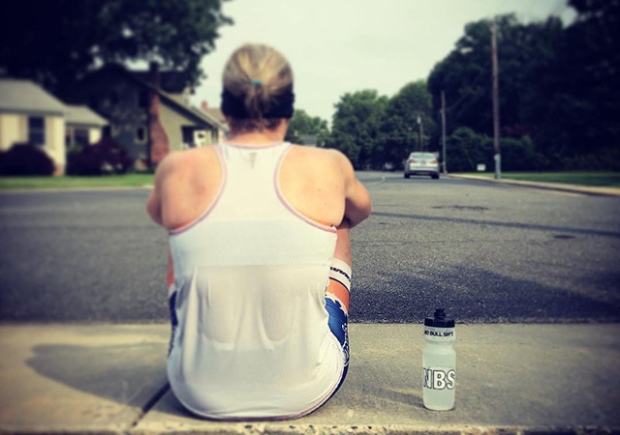
ST: In late May you grabbed 5th at 70.3 Chattanooga and I think you were satisfied with your day.
Holly: I was happy to get another race under my belt. I did some things well and other things not so well. In this sense, I walked away from Chattanooga with a lot of lessons learned, and objectives to focus on for the next 2 upcoming races – Raleigh and Eagleman. To me, that’s success – being able to learn from a race experience and make changes that can produce performance outcomes.
ST: That long drive home after sounds glamorous.
Holly: Was it ever! There is nothing quite like an 11-hour drive home right after a 70.3. I should be sponsored by Red Bull. I drove right back home because my husband and I had just put our house on the market and I needed to get back to meet our real estate agent, as well as do my actual job.
ST: What did your legs feel like when you finally got back out of your car in PA?
Holly: They felt like you would expect. Actually not terrible, just a little water retention.
ST: And what is your day job?
Holly: I work for a small government contractor as a project manager and instructional designer. Basically, I develop curriculum for the Navy’s Surface Warfare Officers School. It’s an incredibly challenging and rewarding line of work.
ST: At 70.3 Eagleman in June you finished 3rd and maybe you can talk to us how that race went.
Holly: Eagleman was my third 70.3 in 4 weeks, so I went into it a little unsure of how the body would hold up. I have this love-hate relationship with Eagleman, as I’m sure many others can relate to, but I was looking forward to seeing what I could do. I was pleased that I was able to apply those lessons learned from Chattanooga successfully at Eagleman. I was more aggressive during the swim and bike, which is what I needed to set myself up for a good run and a shot at the podium. It all worked out and I’m pleased I was able to crack the top 3.
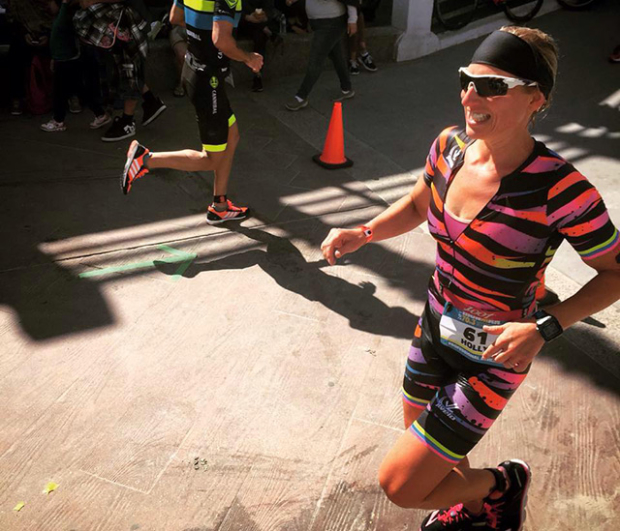
ST: What exactly do you mean by being more aggressive during the swim and bike?
Holly: By more aggressive, I mean more confident really. I used to be almost afraid or reluctant to really push myself and go for it. I’ve been able to cultivate more confidence in my ability and have been able to let it shine, to get out of my own way.
ST: A couple days ago I shared a feature about Julie Furtado’s battle with depression and suicide thoughts and you passionately responded. Can you say why that topic touched you?
Holly: That article really spoke to me. I don’t often come across a story that speaks about struggling with depression and suicide in such a raw way. I lost my first boyfriend to suicide when I was 16. His mother took her own life just a few months afterwards. That was such a painful and dark period of my life. Although an experience like that could cause anyone to become depressed, I had actually struggled with depression from an even younger age, frankly as early as I can remember. Like Julie, I also grew up in an emotionally abusive household and ended up internalizing the negativity from the environment I was raised in. Feelings of inadequacy, self-doubt, self-loathing and pessimistic tendencies are something that I manage as best I can most days.
ST: Is the sport helping you here?
Holly: Sport is a healer for sure. When I was younger, training was very much therapy; often serving a role as an escape mechanism. As I’ve gotten older, sport has morphed into a tool for growth and self-discovery. It’s more than what it was before, in a very positive way.
ST: Since training and racing has helped you, what else has helped you to overcome?
Holly: Developing others has been really something that has helped. Coaching has allowed me to step outside of myself and guide others to create something meaningful for themselves.
ST: Athletes in various sports including triathlon actually have performance related depression. Where their happiness is defined by how well their athletic effort went.
Holly: This sounds like a very dangerous place to be. I have a robust and diverse life outside of sport and although sport is a big part of my identity, it is not my everything. I actually don’t attribute much happiness to athletic outcomes. Those moments are so short lived and triathlon is such a niche environment in my eyes.
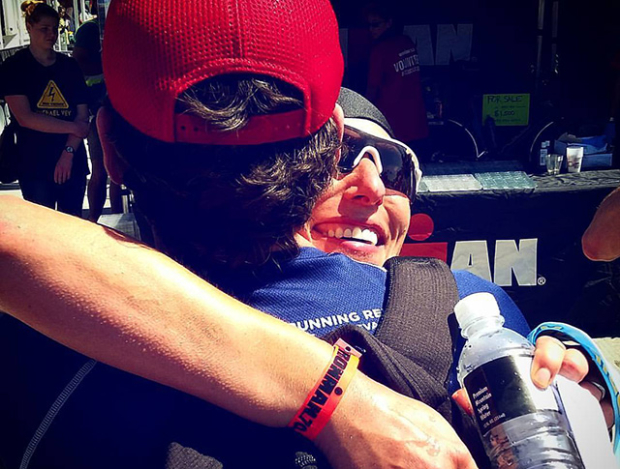
ST: What kind of words and ideas do you have for folks who are depressed?
Holly: Talking really helps. As does knowing that you are not alone. Our curated world online does little to reflect the full scope of human emotion. Creating more discussion about depression is crucial. Having more of a language about how to discuss depression will help those that suffer as well as those who love them. Also, highlighting that depression takes many forms and looks like many different things, i.e. a successful chef, Olympic mountain biker, or fashion designer, will shed light on this condition that feels isolated but is remarkably common.
ST: Your athletic background is swimming and you ended up swimming for Agnes Scott College. What was your best event and what are some of your swimming PR times?
Holly: I loved the 50 and 100 free and 100 breast stroke. At Agnes Scott, we ended up with only 3 girls on the team one year so we all diversified and did a lot of events. I often swam 200 IM and butterfly events. Anything but back stroke! From memory, my best 50 free (yards) was 24.6; 100 free (yards) 54.9; and 100 breast stroke (yards) 1:11:?? Fun fact – I grew up swimming at Swim Atlanta and trained with Eric Shanteu and Amanda Weir, who are both significantly faster than me.
ST: How much swimming do you do now?
Holly: I typically swim 20-25k a week. I try to swim in a local quarry 1-2x a week when the weather permits. Swimming, more than running or biking is very much a moving meditation for me. I’ll swim until the day I can’t.
ST: Is access to a good pool easy for you?
Holly: I think so. I swim at the Rodale Aquatic Center located at Cedar Crest College. I love the swimmers I see daily and can usually get a lane. That’s a win.
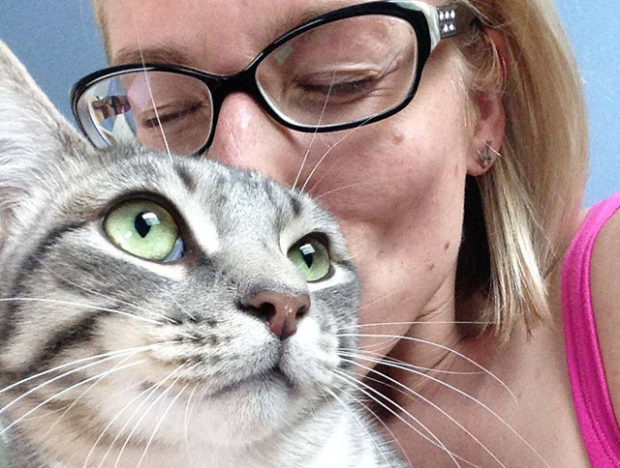
ST: Can you describe one of your harder swim sets you do in a pool?
Holly: I’ve been working with Dave Luscan of Finding Freestyle and he has provided more than enough challenging swim sets. Some of my favorite ones are speed play sets:
Warm up
1 X 800 done as: 100 choice / 50 KOB / 50 swim w/1 BT rest 1:00
6 X 50 pull on 10 rest
odd – head – lead
even – build
8 X 25 swim on :10 rest
odd – 2-step breakouts
even – fast breakout
6 X 50 6-6 pulse (1 BT/ choice) des 1-3 on :15 rest
Main set (3,900)
4 X 100 @ 1:12 on :10-:15 rest
4 X 100 @ 1:14 on :10-:15 rest
4 X 100 @ 1:12 on :10-15 rest
1 X 150 25 1-6 SoL / 50 BR 3-4 X2 rest :30
4 X 100 @ 1:12 on :10-:15 rest
4 X 100 @ 1:14 on :10-:15 rest
4 X 100 @ 1:12 on :10-15 rest
6 X 25 on :10 rest
odd – easy pull BR 2-5
even – FSBA
3 X 100 @ 1:12 on :10-:15 rest
3 X 100 @ 1:14 on :10-:15 rest
3 X 100 @ 1:12 on :10-15 rest
Warm down
1 X 200 easy
Total: 5,400
ST: What about cycling and running. How much time do you dedicate weekly to these disciplines?
Holly: I don’t usually track hours by discipline. I prefer to go based on mileage, and listen to how my body is feeling. Plus, I live in a very hilly area (Lehigh Valley, PA) so a 20 mile bike might take a bit longer than one might expect. In general, I bike 4-5 times a week, around 150-250 miles a week – yes, a big range. With running, I feel best when I run consistently. That means 5-6 times a week; anywhere from 35-45 miles a week. I’m coached by Todd Wiley and we have a very collaborative relationship which really works for me.
ST: And what kind of bike to you race on?
Holly: I have an amazing custom Trek Speed Concept. I’ve partnered with my local bike shop Trek of Bethlehem and they really take care of me. I’m also happy to be a Women’s Ambassador for Trek this year as well!
ST: What is next for you?
Holly: I’m just wrapping up a little mid-season break and will start a build for Steelhead 70.3, followed by the Super League Triathlon event in Penticton, B.C.
ST: You raced a couple SwimRun events in 2016 but you have been busy with triathlon since. Are you all done with SwimRun?
Holly: When I get past a few goals in triathlon world, like 2019 Challenge Roth… I plan on fully committing to SwimRunning! I love love, love those events and really can't wait to travel the world to do them.
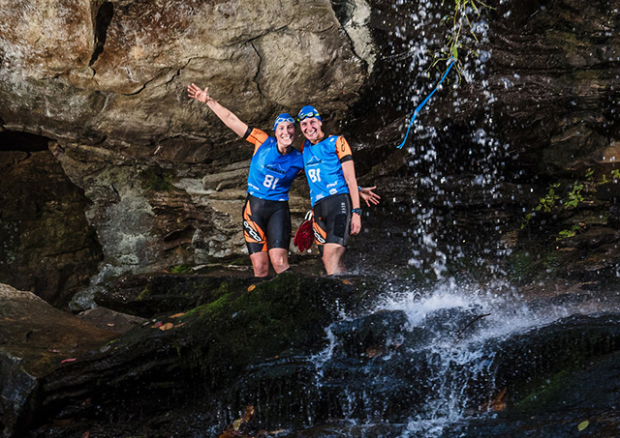
ST: Many folks who come from a swimming background complain that the SwimRun sport allows gadgets such as pull buoys and paddles. What is your opinion about that, and what about that dynamic of having to race as a team of two?
Holly: In the sport of SwimRun, using paddles and buoys make sense. You have to divide the energy expenditure between the working muscle groups appropriately throughout the event. Work your upper body during the swim and save your legs for the run. Also, equipment choice in SwimRun is determined by the athlete(s). They are not required. For example, in the 3 SwimRun events I’ve competed in, I never used a pull buoy, figuring my shoes were buoyant enough. I also didn’t use giant paddles, just my normal ones I’ve had for a decade.
The team dynamic of SwimRun is phenomenal. It makes it so much more fun than competing solo. Kind of like how swimming relays are likely the only events at a swim meet you’ll see swimmers really have fun. The team is greater than the sum of the parts.
ST: Anything else we need to know?
Holly: My husband, Matt, urged me to mention our two amazing cats, Henry and Samantha. We love them. A lot. Also, that long drive home from Chattanooga payed off, as we sold our home in 4 days!
You can follow Holly Benner on Instagram via @holly.a.benner



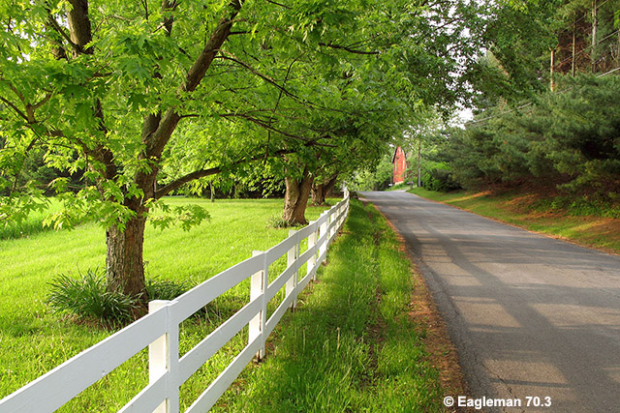
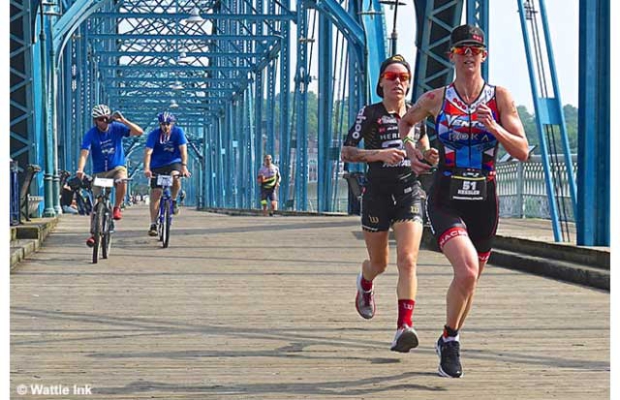
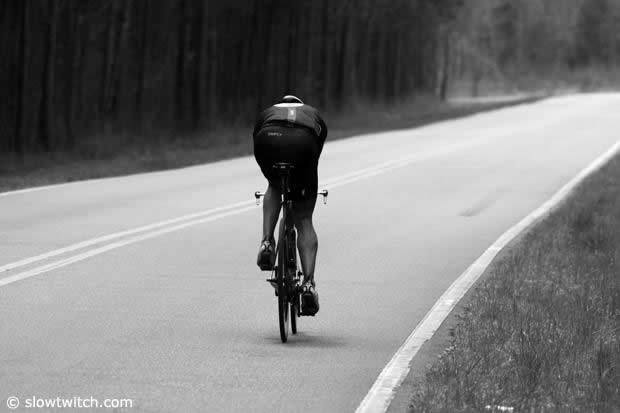

Start the discussion at forum.slowtwitch.com